Using Technology to Simplify Rent Collection: A Comprehensive Guide
Introduction to the Challenges of Rent Collection
Managing rent collection can be one of the most time-consuming and frustrating aspects of property management. From missed payments to manually tracking rent status, landlords and property managers face a variety of challenges in ensuring timely rent payments. However, with the advancement of technology, these challenges can now be significantly reduced or even eliminated altogether. In this guide, we will explore how technology can simplify the rent collection process, making it more efficient, secure, and hassle-free for both property managers and tenants.
The Traditional Rent Collection Process: Challenges and Pain Points
Before diving into the technological solutions, it’s important to first understand the pain points of the traditional rent collection system. Many property managers and landlords still rely on outdated methods, such as:
- Manual Tracking: Keeping track of payments in spreadsheets or on paper can lead to errors, missed payments, or delays in processing.
- Inconsistent Payment Methods: Some tenants prefer to pay in cash, others by check or bank transfer, which can complicate the process.
- Late Payments and Fees: Managing late payments manually can lead to misunderstandings and disputes. Late payment fees may not be applied consistently.
- Lack of Communication: Renters may forget the payment due date or fail to see rent reminders, resulting in late or missed payments.
These outdated methods are inefficient, error-prone, and time-consuming. Thankfully, modern technology has revolutionized how rent can be collected and tracked.
Benefits of Using Technology for Rent Collection
Adopting technology to simplify rent collection brings several key benefits, including:
- Automation: Rent collection can be automated, ensuring payments are processed on time, every time. Automatic reminders and recurring billing help keep everything on track without constant intervention.
- Multiple Payment Methods: Technology allows tenants to pay through various channels, such as credit/debit cards, bank transfers, or digital wallets, catering to different preferences.
- Transparency: Both tenants and property managers can view payment histories, outstanding balances, and receipts, improving communication and trust.
- Security: Digital payment methods are more secure than cash or checks, reducing the risk of fraud or loss. Additionally, payment platforms are often encrypted, ensuring tenants’ personal and financial data is protected.
- Efficiency: Rent payments can be processed faster, reducing the administrative burden and freeing up time for property managers to focus on other tasks.
In the following sections, we will discuss how you can implement technology to streamline the rent collection process for your rental properties.
Choosing the Right Rent Collection Software
The first step to simplifying rent collection through technology is selecting the right software or platform. With numerous options available, it’s important to choose one that meets your specific needs and preferences. Here are some factors to consider when selecting rent collection software:
1. User-Friendliness
The platform should be easy to use for both property managers and tenants. The process of paying rent, setting up recurring payments, and tracking transactions should be intuitive and simple. Choose a platform that offers clear instructions and customer support in case you need help.
2. Payment Methods Supported
Look for a platform that offers multiple payment options, such as ACH transfers, credit/debit card payments, PayPal, and mobile payment solutions like Apple Pay or Google Pay. This will provide flexibility for tenants and make it easier to collect rent on time.
3. Automation Features
A good rent collection software should allow you to automate recurring billing, send late payment reminders, and issue receipts automatically. Automation helps reduce administrative workload and ensures consistency in payment processing.
4. Integration with Accounting Software
To avoid manual data entry, choose a platform that integrates seamlessly with your existing accounting software. This integration can help streamline your financial reporting, ensuring all rent payments are recorded and tracked in real-time.
5. Security and Compliance
Ensure that the platform complies with data protection regulations (such as GDPR or CCPA) and uses encryption to safeguard sensitive information. The platform should also be PCI-DSS compliant if it processes credit card payments.
Popular Rent Collection Software Options
There are a variety of rent collection software tools available, each offering unique features and pricing structures. Here are a few top options to consider:
- Buildium: This all-in-one property management platform offers online rent collection, automatic reminders, and accounting features. It integrates with other accounting tools and supports ACH transfers and credit card payments.
- TenantCloud: TenantCloud allows for easy rent collection through online payments, including options for recurring payments and late fees. The platform also integrates with accounting software and offers a mobile app for tenants to track their payments.
- Rentec Direct: Rentec Direct offers an online payment portal that enables tenants to pay via credit card or eCheck. The platform also includes automated reminders, payment tracking, and integration with QuickBooks for financial reporting.
- Cozy: Known for its simplicity, Cozy allows tenants to pay rent online via ACH transfer or debit/credit card. Property managers can set up recurring payments and manage leases directly within the platform.
By selecting the right platform, you can begin automating and streamlining the rent collection process.
Setting Up Automated Payment Reminders
One of the most effective ways technology simplifies rent collection is through automated payment reminders. Missed payments are a common issue for landlords, but with automated reminders, tenants are more likely to pay on time.
1. Customizable Reminders
Most rent collection software platforms allow you to customize the frequency and timing of reminders. You can set reminders to go out a few days before the due date, on the due date itself, and even after the due date if payment is not received. This ensures that tenants are always aware of when payments are due and are prompted to take action.
2. SMS, Email, and App Notifications
To ensure your reminders are seen, many platforms offer multiple communication channels, such as SMS text messages, email alerts, or mobile app notifications. Using multiple channels increases the chances that the tenant will see and act on the reminder in a timely manner.
3. Late Fees and Penalties
Automating the application of late fees and penalties can save property managers time and eliminate the need for manual calculations. Late fees can be automatically added to a tenant’s balance if payment is not made on time, and tenants will receive an updated statement reflecting the charges.
By automating the payment reminder process, you can improve rent collection efficiency and reduce late payments, without spending your time sending individual reminders.

Get a Free Rental Analysis
Want to know how much your home will rent for? We’ll send you a free rental report!
Leveraging Technology to Optimize Rent Collection and Enhance Tenant Experience
Mobile Apps: Streamlining Rent Payments on the Go
In today’s digital world, tenants expect convenience, and one of the best ways to offer that is by utilizing mobile apps. With the rise of smartphones, tenants now prefer to manage their rental payments and account details directly from their phones. Property managers can take advantage of this trend by using mobile app features that simplify the rent payment process for tenants.
1. Tenant Convenience and Accessibility
Mobile apps offer tenants the convenience of paying rent from anywhere at any time. This eliminates the need for tenants to visit a physical location, drop off checks, or deal with complicated payment procedures. With just a few taps, tenants can submit payments securely and receive immediate confirmation.
2. Real-Time Payment Tracking
Mobile apps often feature dashboards that show tenants their payment history, current balances, and upcoming due dates. This transparency can prevent confusion, missed payments, and late fees, as tenants are always aware of their financial obligations. Additionally, property managers can monitor payments in real-time, ensuring they stay up to date on the status of their rent collection.
3. Push Notifications and Alerts
Another advantage of mobile apps is the ability to send push notifications directly to tenants’ phones. These notifications can remind tenants of upcoming payment due dates, payment confirmations, or late fee warnings. This feature provides a more immediate and personalized communication channel, increasing the likelihood of timely payments.
4. Security Features
Mobile payment apps are typically equipped with high-security measures, such as encryption, two-factor authentication, and biometric login options (e.g., fingerprint or facial recognition). These features ensure that payments are processed securely, protecting both tenants’ financial data and property managers from fraud.
Some widely used mobile apps for rent collection include:
- RentPayment: This app allows tenants to pay rent online via credit card, debit card, or eCheck, and offers features like payment history tracking and push notifications.
- Zillow Rental Manager: Tenants can pay rent via bank transfer or credit card through this app, and landlords can manage payments, lease agreements, and other property management tasks from a centralized platform.
By offering tenants the ability to make payments through a mobile app, property managers can enhance tenant satisfaction and improve rent collection efficiency.
Automating Rent Collection with Recurring Billing
Another technology-driven solution to simplify rent collection is the use of recurring billing. With recurring billing, tenants’ rent payments are automatically processed on the same day each month, reducing the need for manual intervention and ensuring that payments are made on time.
1. Reducing Administrative Workload
Recurring billing eliminates the need for property managers to manually remind tenants each month or keep track of who has paid. Once the recurring payment is set up, the system takes over, automatically charging tenants’ accounts each month. This automation frees up valuable time for property managers to focus on other aspects of property management, such as maintenance or tenant relations.
2. Tenant Ease and Predictability
For tenants, recurring billing provides predictability and convenience. They don’t need to remember when their rent is due, and they don’t need to worry about late payments or associated fees. Once tenants agree to the recurring billing arrangement, payments are automatically deducted from their accounts.
3. Customizable Payment Terms
Many rent collection platforms that support recurring billing allow for flexible customization. Property managers can set the due date, payment amount, and frequency (weekly, monthly, quarterly, etc.) to suit their business needs. Some platforms also allow tenants to update payment details or adjust billing terms if needed.
Examples of rent collection systems that offer recurring billing features include:
- Yardi RentCafe: This platform allows tenants to set up automatic payments, making it easy for both tenants and landlords to manage monthly rent payments.
- TenantCloud: Provides an option for landlords to automate rent payments, which ensures regular and timely payments each month.
By adopting recurring billing, property managers can ensure a consistent cash flow and minimize the administrative burden of tracking payments.
Addressing Late Payments: Implementing Automated Penalties and Grace Periods
Late payments are an ongoing concern for many landlords. While some tenants may simply forget, others may face financial difficulties, leading to delays in payment. Fortunately, technology can help manage late payments more effectively by automating penalties and grace periods.
1. Automated Late Fees and Penalties
Rent collection software platforms can automatically apply late fees based on pre-established rules. For example, if rent is not paid within five days of the due date, the system will automatically add a late fee to the tenant’s balance. This ensures that late fees are applied consistently and fairly, without requiring manual intervention.
2. Grace Periods
Many tenants appreciate having a grace period after the rent due date to avoid late fees. Some property managers may choose to offer a window of 3–5 days before penalties are applied. This can be set up automatically within the rent collection system, allowing tenants to pay without worrying about accidental late fees.
3. Clear Communication and Enforcement
Automated systems also make it easier to communicate with tenants about late payments. Automated reminders can be sent when a payment is overdue, notifying tenants of the late fee and the grace period, and giving them an opportunity to pay before further penalties are incurred.
4. Reducing Tenant Disputes
When rent collection systems are automated, property managers can avoid disputes with tenants regarding late fees. Tenants are always aware of the late fee policy, and the system ensures that fees are applied evenly across all tenants. Additionally, having clear communication and transparent billing statements can reduce misunderstandings and help maintain positive tenant relationships.
Managing and Reporting Rent Payments
Another significant benefit of using technology to simplify rent collection is the ability to generate detailed reports and manage payment histories. Accurate record-keeping is crucial for financial transparency and tax purposes.
1. Real-Time Reporting
Most property management platforms provide real-time reporting, so property managers can track rent collection status, payment trends, and overdue accounts. These reports can be accessed at any time, offering insight into the financial health of the property.
2. Financial Statements and Tax Documentation
With digital records, property managers can easily generate financial statements and tax documentation. This can save time during tax season, as the data required for tax filings is already in the system. Additionally, property managers can track income and expenses for individual units or entire portfolios, making it easier to analyze profitability and make informed business decisions.
3. Customizable Reports
Many property management platforms allow for customizable reports, so property managers can tailor reports to focus on specific metrics such as rent payments, tenant balances, or financial projections. These reports can be exported and shared with accountants or other stakeholders.
Popular property management platforms that offer advanced reporting features include:
- AppFolio: Offers financial reports, payment history tracking, and tax documentation tools, making rent collection management much easier.
- Buildium: Allows property managers to create customized financial reports, including profit-and-loss statements and delinquency reports.
By using technology to manage and report on rent payments, property managers can ensure that they always have accurate, up-to-date financial records.

Future Trends in Rent Collection Technology and Best Practices for Success
Blockchain Technology: Revolutionizing Rent Payments
Blockchain technology, known primarily for powering cryptocurrencies like Bitcoin, is beginning to find applications in various sectors, including real estate. Blockchain’s decentralized and transparent nature makes it an ideal solution for rent collection, ensuring that transactions are secure, transparent, and traceable.
1. Security and Fraud Prevention
Blockchain’s inherent security features make it resistant to tampering or fraud. Each transaction on a blockchain is recorded in a “block” and linked to the previous one, creating an immutable ledger. For rent collection, this means that once a payment is made, it is securely recorded, and there is no possibility of altering or reversing the transaction. This can provide both landlords and tenants with peace of mind, knowing that payments are secure and transparent.
2. Instant Payments
Blockchain has the potential to process transactions much faster than traditional methods. Payments can be made and settled in real-time, eliminating delays associated with bank transfers or check processing. This is particularly valuable for tenants who may be at risk of late fees due to slow payment processing.
3. Smart Contracts
One of the most promising features of blockchain technology for rent collection is the use of smart contracts. Smart contracts are self-executing agreements with predefined terms and conditions written into the code. For instance, a smart contract could automatically transfer the rent payment from a tenant’s account to the property manager once the payment due date arrives, and even apply a late fee if the payment is not made on time.
Popular blockchain platforms such as Ethereum are already exploring the use of smart contracts for rent payments, and these technologies could become more widespread in the coming years.
Artificial Intelligence (AI) and Machine Learning for Predictive Rent Collection
Artificial intelligence (AI) and machine learning are increasingly being used in property management, including rent collection. By analyzing historical data, AI can predict trends, forecast potential issues, and even offer insights into when tenants are most likely to pay or default on payments.
1. Predicting Payment Patterns
AI-powered tools can analyze tenants’ payment history, rental market trends, and economic factors to predict when a tenant is most likely to make their payment. This information helps property managers better plan for cash flow and can even trigger proactive reminders or intervention strategies if a tenant is predicted to be at risk of missing a payment.
2. Dynamic Rent Collection Strategies
AI can help property managers develop dynamic rent collection strategies. For example, if AI identifies that a tenant is consistently late, it could suggest adjustments to payment reminders or recommend offering a payment plan. AI can also be used to determine the best time to send reminders, ensuring that notifications are sent when tenants are most likely to respond.
3. Automating Communication and Follow-Up
Using AI, property managers can automate communication with tenants in a personalized manner. AI chatbots can respond to tenant inquiries about their payment status or lease terms, and automated emails or SMS messages can follow up with tenants who have missed payments, providing reminders and payment links.
Integration with Other Property Management Tools
Modern rent collection platforms often integrate with other property management tools, creating an all-in-one solution for landlords and property managers. By consolidating various tasks like lease tracking, maintenance requests, and accounting into one platform, property managers can further streamline their operations.
1. Accounting and Financial Management Integration
Rent collection systems integrated with accounting software like QuickBooks or Xero allow property managers to automatically update financial records each time a payment is made. This integration reduces the time spent on manual bookkeeping and ensures that all financial data is accurately recorded.
2. Lease Management Integration
By integrating rent collection systems with lease management platforms, property managers can easily track lease terms, rent due dates, and payment histories in one place. This eliminates the need for separate systems, simplifying the workflow for property managers and ensuring that all lease-related tasks are linked to payment tracking.
3. Maintenance and Tenant Communication Integration
Some property management platforms also integrate maintenance management and communication tools. This allows property managers to track maintenance requests and tenant inquiries while keeping an eye on rent collection. For example, if a tenant submits a maintenance request and has an outstanding rent payment, the system may notify the property manager, helping them prioritize communication and follow-up.
Best Practices for Successful Rent Collection with Technology
While adopting technology for rent collection is a step in the right direction, it is essential to follow best practices to ensure long-term success. Here are some key strategies for maximizing the effectiveness of your rent collection process:
1. Clearly Communicate Payment Terms and Policies
Before implementing technology solutions, property managers must ensure that tenants understand the payment process. Set clear expectations regarding rent due dates, payment methods, late fees, and penalties for non-payment. By ensuring tenants are fully informed, property managers can avoid confusion and reduce the likelihood of missed payments.
2. Offer Multiple Payment Options
While some tenants may prefer digital payment methods, others may still prefer more traditional methods like checks or cash. By offering a variety of payment options—such as credit cards, ACH transfers, or mobile payments—property managers can cater to a broader range of tenants and reduce the likelihood of missed or delayed payments.
3. Utilize Reminders and Notifications
Timely reminders and notifications can be crucial in ensuring that rent is paid on time. Use automated systems to send reminders ahead of the due date and follow-up notices when payments are overdue. Offering multiple communication channels, such as email, text, or in-app notifications, ensures that tenants are aware of their obligations.
4. Set Up Clear Late Fee Policies
Late fees should be outlined clearly in the lease agreement and enforced consistently. Property managers should implement automated late fees to ensure that they are applied fairly and transparently. Make sure to communicate the late fee structure to tenants at the start of the tenancy and regularly remind them of the policy.
5. Monitor Payment Patterns and Adjust Strategies
As you collect more data, use analytics to monitor payment trends and identify tenants who may be at risk of missing payments. By proactively addressing issues early, property managers can avoid more serious payment problems down the road.
6. Invest in Ongoing Training
Property managers should regularly educate themselves on the latest tools and technologies for rent collection. Staying informed about new features, software updates, and emerging trends in the property management industry ensures that property managers can adapt to changing technologies and continue to improve their rent collection processes.
Final Thoughts
The use of technology in rent collection is no longer just a convenience but a necessity for property managers who want to stay competitive in today’s digital world. By adopting tools like mobile apps, recurring billing, AI-powered analytics, and even blockchain, property managers can streamline their rent collection processes, reduce administrative tasks, and provide a better experience for tenants. However, it’s essential to follow best practices and stay informed about the latest developments to maximize the benefits of these technologies.
As technology continues to evolve, the future of rent collection is likely to involve even more advanced solutions that enhance security, convenience, and efficiency. Property managers who embrace these innovations today will be better positioned to thrive in the rental market of tomorrow.
Suggested Relevant Links:
How to Handle Tenant Issues Like a Pro
Rent Collection Services Palm Beach
Choosing the Right Property Management Companies in Palm Beach
How Technology is Transforming Property Management in Palm Beach County
Frequently Asked Questions (FAQ) on Using Technology to Simplify Rent Collection
1. What are the benefits of using technology for rent collection?
Technology enhances efficiency, reduces errors, speeds up payments, provides security, and increases tenant convenience by allowing online and automated payments.
2. What types of technology can property managers use for rent collection?
Popular tools include online payment platforms (e.g., PayPal, Rentec Direct), mobile apps (e.g., AppFolio, TenantCloud), automated billing systems, and advanced options like blockchain and smart contracts.
3. How can automated reminders help with rent collection?
Automated reminders help reduce late payments by notifying tenants about due dates, which decreases manual follow-ups and ensures consistent communication.
4. Are there any risks associated with using technology for rent collection?
Risks include technical issues, security concerns, and tenant resistance to adopting digital methods. Choosing reputable platforms and offering multiple payment options can mitigate these risks.
5. Can tenants pay rent using mobile apps?
Yes, mobile apps like Rentec Direct, AppFolio, and TenantCloud allow tenants to pay rent securely through credit cards, bank transfers, or other methods.
6. What is a smart contract, and how does it work in rent collection?
A smart contract automates rent payments, enforcing terms and triggering actions like penalties for missed payments, without the need for manual intervention.
7. How does blockchain technology improve rent collection?
Blockchain ensures secure, transparent, and fast transactions, with reduced fraud risk and the ability to use smart contracts for automating payments.
8. What is the role of AI in rent collection?
AI predicts payment patterns, automates communication, and suggests personalized payment strategies based on tenant behavior, improving efficiency.
9. Is it essential to offer multiple payment options to tenants?
Yes, offering flexibility in payment methods, like credit cards or bank transfers, ensures convenience for tenants and reduces missed payments.
10. How can property managers ensure a smooth transition to technology for rent collection?
Clear communication, training resources, offering multiple payment options, and monitoring the system’s effectiveness help ensure a smooth transition.
11. How does rent collection technology integrate with other property management tools?
Many rent collection platforms integrate with accounting software, lease management tools, and maintenance systems for streamlined operations.
12. What are the most popular rent collection platforms?
Popular platforms include PayRent, Rentec Direct, TenantCloud, and AppFolio, which offer online payment processing, reminders, and reporting.
13. What should I do if a tenant repeatedly misses rent payments?
Use automated reminders, offer payment plans, or enforce lease terms, such as penalties or legal action if necessary.
14. What should I look for when selecting a rent collection platform?
Look for security, ease of use, multiple payment methods, integration capabilities, and reliable customer support when choosing a platform.



